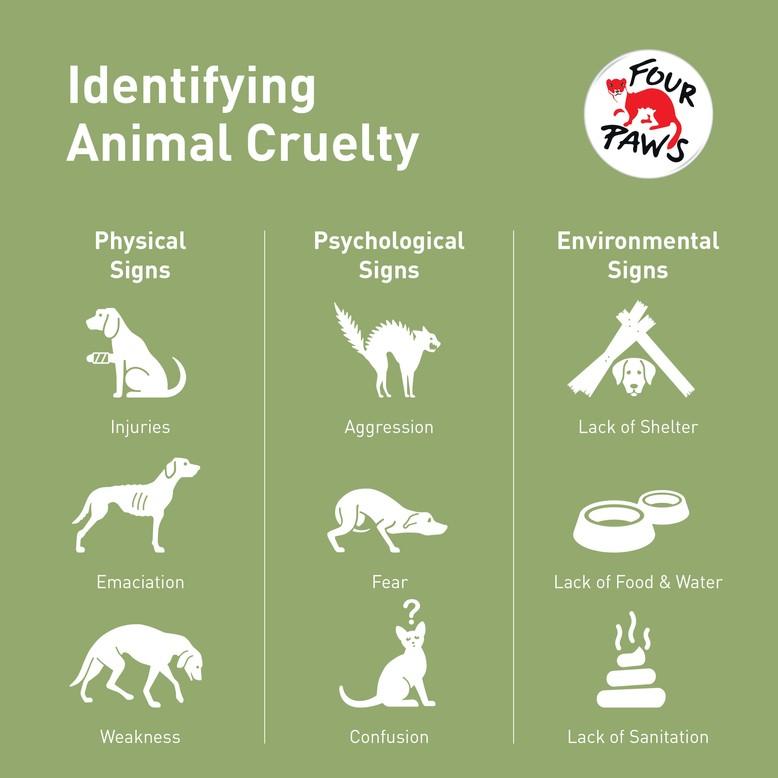Animals are particularly vulnerable to abuse because they are unable to communicate their circumstances and have no way of escaping unless someone picks up on the signs and provides help. Animal cruelty can also be a gateway crime to hurting vulnerable humans.
Even an apparently good person can secretly be abusing their animal for a sense of power. Young children can also unintentionally harm a pet, which is why it's important to provide proper education on empathy, the value of life, respecting animals, and appropriate handling techniques. Sometimes children hurt pets as a way to cope with trauma or intense emotions, which requires professional help for both parties.
If you see signs that an animal might be an abuse victim, or if you directly witness abuse, be prepared to help. Document what you saw in as much detail as you can. Call your local police department, animal shelter, or humane society to make a report. You may remain anonymous, but willingness to testify will help build a stronger case to save any animals involved and prevent further harm.
These lists are not all-inclusive. Additional signs not seen on this page may indicate abuse.
Signs of Animal Abuse:
Hitting, kicking, throwing, or any physical harm to an animal may lead to:
– Tucked tail, flinches at human contact
– Difficulty walking, unexplained fractures or limping
– Unprovoked aggression, whining, cowering, or whimpering
– Overly submissive (rolling onto back, tail tucked, urinating)
– Attempts to bite or scratch when petted (fear bites)
– Suddenly avoiding any physical contact

Signs of Animal Neglect:
Failing to provide adequate food, hygiene, or medical care may lead to:
– Changes in appearance, such as fur loss, dull texture, or mange
– Appearing filthy and could have fleas or a tick infestation
– Very skinny or sickly looking, bones might be visible
– Lethargic or aggressive behaviour due to dehydration
– Living area may be covered in debris or feces
– Congested eyes or ears with discharge
– Difficulty walking or an inability to walk
– Obvious wounds or injuries that remain untreated
– Excessive barking or whining for prolonged periods
– Begging for food or being extra friendly with strangers
Other signs of neglect:
– Being left in a kennel or chained outside exclusively
– Having little room to stand or move where tied or caged
– Being left in a car with closed windows on a hot day
– Being abandoned in a vacated house or empty yard
– Too many animals living together may indicate hoarding
